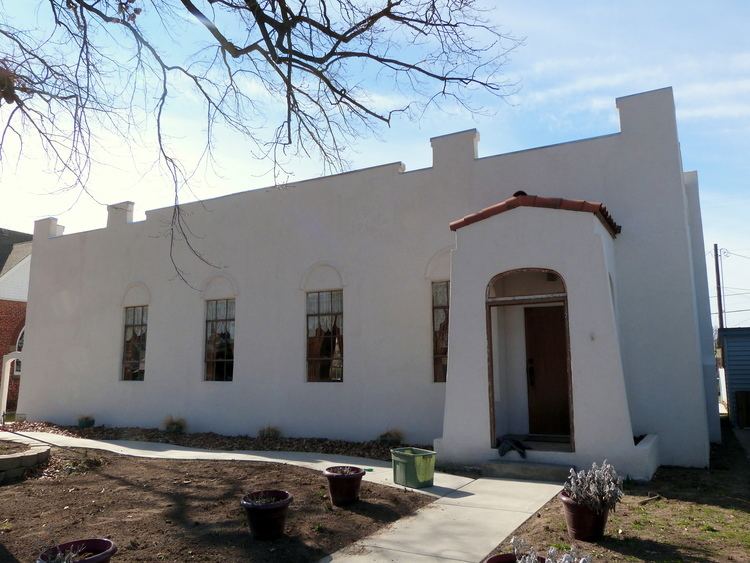Country United States County Payette FIPS code 16-61300 Elevation 655 m Local time Saturday 1:04 AM Area code 208 | GNIS feature ID 0397983 Zip code 83661 Population 7,430 (2013) | |
 | ||
Weather 6°C, Wind W at 2 km/h, 93% Humidity Area 9.997 km² (9.971 km² Land / 3 ha Water) | ||
Payette is a city in and the county seat of Payette County, Idaho, United States. The population was 7,433 at the 2010 census. It is part of the Ontario, OR−ID Micropolitan Statistical Area.
Contents
- Map of Payette ID 83661 USA
- History
- Geography
- Highways
- 2010 census
- 2000 census
- Climate
- Notable people
- Points of interest
- References
Map of Payette, ID 83661, USA
History
The settlement was originally named "Boomerang," a construction camp for the Oregon Short Line from 1882-84 at the mouth of the Payette River. Logs were floated down the river to the sawmills at the camp to produce railroad ties. After completion of the railroad, the settlement moved upstream to its present site and incorporated in 1891 as "Payette," to honor François Payette, a French-Canadian fur trapper and one of the first white men to explore the area. He arrived in present-day Idaho from Astoria and was later the head of the Fort Boise trading post for the British Hudson's Bay Company from 1835-44. A large merry man, Payette was highly regarded for his helpful assistance to the many travelers who came through the fort. After his retirement in 1844, he returned to Montreal, but the rest of his life is a mystery.
Payette County was created in 1917, partitioned from Canyon County, and the city of Payette became the county seat.
Geography
Payette is located at 44°4′31″N 116°55′48″W (44.075175, -116.929928), at an elevation of 2,149 feet (655 m) above sea level.
According to the United States Census Bureau, the city has a total area of 3.86 square miles (10.00 km2), of which, 3.85 square miles (9.97 km2) is land and 0.01 square miles (0.03 km2) is water.
Highways
2010 census
As of the census of 2010, there were 7,433 people, 2,816 households, and 1,910 families residing in the city. The population density was 1,930.6 inhabitants per square mile (745.4/km2). There were 3,095 housing units at an average density of 803.9 per square mile (310.4/km2). The racial makeup of the city was 86.6% White, 0.2% African American, 1.5% Native American, 0.8% Asian, 7.3% from other races, and 3.5% from two or more races. Hispanic or Latino of any race were 19.3% of the population.
There were 2,816 households of which 36.7% had children under the age of 18 living with them, 48.2% were married couples living together, 13.6% had a female householder with no husband present, 6.0% had a male householder with no wife present, and 32.2% were non-families. 26.4% of all households were made up of individuals and 12.3% had someone living alone who was 65 years of age or older. The average household size was 2.61 and the average family size was 3.12.
The median age in the city was 35 years. 28% of residents were under the age of 18; 9.5% were between the ages of 18 and 24; 24.5% were from 25 to 44; 22.5% were from 45 to 64; and 15.6% were 65 years of age or older. The gender makeup of the city was 48.9% male and 51.1% female.
2000 census
As of the census of 2000, there were 7,054 people, 2,619 households, and 1,841 families residing in the city. The population density was 2,087.2 people per square mile (805.8/km²). There were 2,834 housing units at an average density of 838.6 per square mile (323.7/km²). The racial makeup of the city was 87.43% White, 0.09% African American, 1.15% Native American, 0.86% Asian, 0.03% Pacific Islander, 7.67% from other races, and 2.78% from two or more races. Hispanic or Latino of any race were 15.78% of the population.
There were 2,619 households out of which 37.0% had children under the age of 18 living with them, 54.4% were married couples living together, 11.3% had a female householder with no husband present, and 29.7% were non-families. 25.8% of all households were made up of individuals and 11.1% had someone living alone who was 65 years of age or older. The average household size was 2.66 and the average family size was 3.20.
In the city, the population was spread out with 30.7% under the age of 18, 9.0% from 18 to 24, 27.2% from 25 to 44, 19.2% from 45 to 64, and 13.9% who were 65 years of age or older. The median age was 32 years. For every 100 females there were 94.7 males. For every 100 females age 18 and over, there were 91.4 males.
The median income for a household in the city was $29,375, and the median income for a family was $36,944. Males had a median income of $28,762 versus $19,781 for females. The per capita income for the city was $13,826. About 11.4% of families and 15.2% of the population were below the poverty line, including 18.0% of those under age 18 and 12.3% of those age 65 or over.
Climate
Payette experiences a semi-arid climate (Köppen BSk) with cold, moist winters and hot, dry summers.
